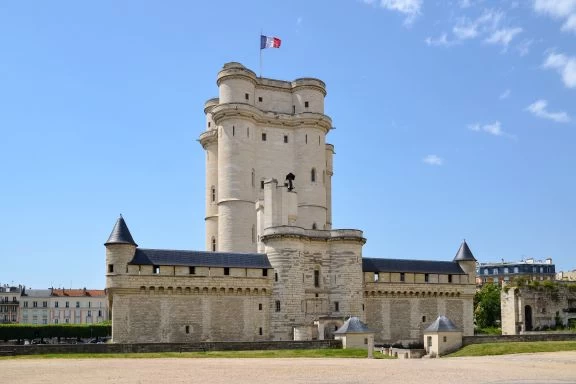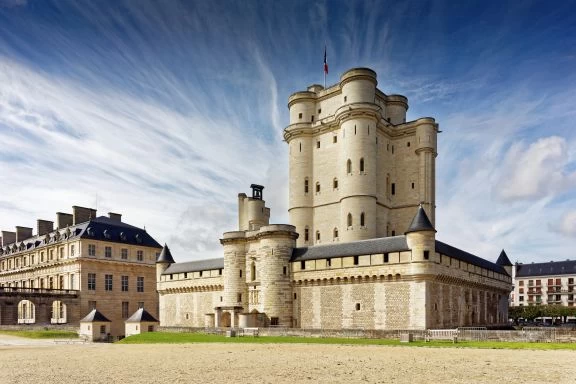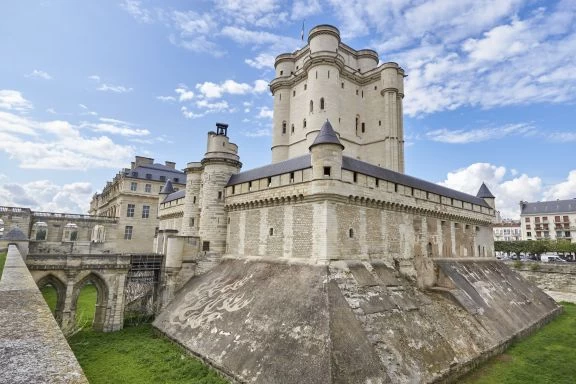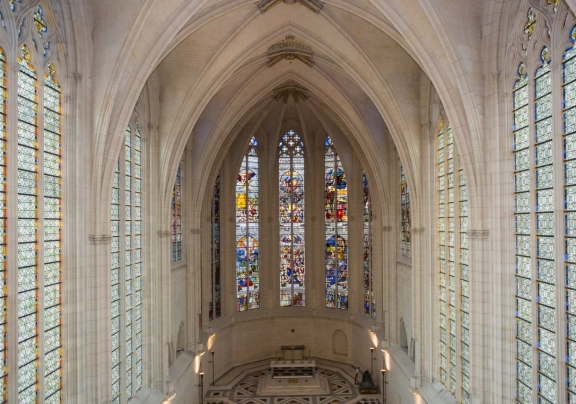On the eastern outskirts of Paris, near the town of Vincennes, and beside the Bois de Vincennes, explore the former fortress and royal home known as The Château de Vincennes . The majority of its construction took place between 1361 and 1369, and from the 14th through 16th centuries, it served as the French Kings' favored palace, second only to the Palais de la Cité. Discover the fascinating past of this remarkable structure, which served as a prison before becoming a barracks and an arsenal during the Napoleonic era.
Highlights
- Visit the famous Château de Vincennes, and be fascinated by the all-white, classic medieval building that bears witness to its former status as a royal palace.
- Explore its lofty towers and dungeon, which served to fortify the castle during battles, and stroll around its historic hallways.
- Discover the well-preserved medieval keep, the tallest fortified tower in Europe at 52 meters, where King Henry V died and see where Fouquet , the Marquis de Sade, and Mirabeau were held.
- Experience the Gothic building's awe-inspiring external flamboyance and beautiful rose window at the Sainte Chapelle de Vincennes.




If you are visiting Paris, you are aware of the crowds everywhere. For a change of pace, ride metro line 1 to the end and check out the Chateau in Vincennes. We had the place to ourselves. There was a chapel, as well as a well preserved/restored medieval fortress. The self guided tour is interesting. It does not compare to Versailles for example, but has a rich history of its own. It's worth a visit. It is free with the Paris museum pass, and you can ride the metro to Vincennes with the Navigo pass.
Sadly they were setting up for a special event so the grounds were covered in tents. Also conservation is being done on one of the buildings (that’s a good thing) but it made it confusing to see where you could go. The church was beautiful though. I’d recommend holding off going till the spring.
Built in the 14th century. Its 52 meters high donjon tower is the tallest medieval fortified structure of Europe. Though not as famous as other chateau around Paris, the Château de Vincennes long served as a residence for the kings of France, and was involved in some important wars, including Napoleonic Wars and WW II. Another interesting historical event was its relationship with Marquis de Sade. The father of eroticism, Marquis de Sade (whose erotic writings gave rise to the term sadism and sadist ), was imprisoned in the cell number six of the donjon from 1777 to 1784. Now there is an exhibition of his letters and manuscripts.